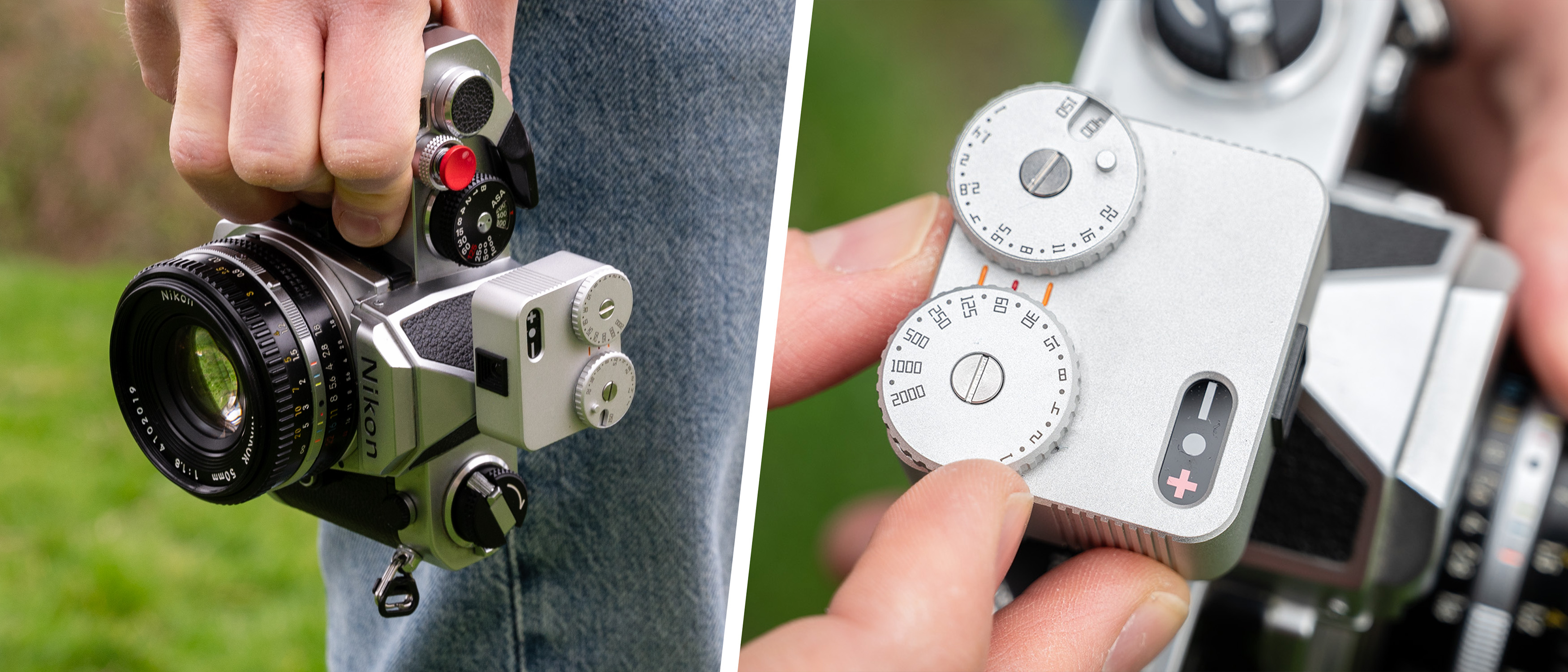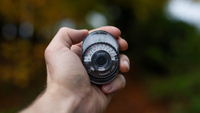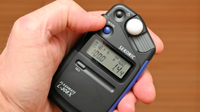Digital Camera World Verdict
My list of negatives does the TTArtisan Light Meter II a bit of a disservice, because in spite of its shortcomings, it’s still an easy-to-use device that’s accurate enough and considerably cheaper than the more premium alternatives on the market. If budget matters most, this is a serviceable light meter for film cameras that’ll prove adequate for a newbie film photographer or an enthusiast on a budget.
Pros
- +
Classic retro look
- +
Simple to use
- +
Great price
- +
Light and compact
Cons
- -
Build could be better
- -
ISO dial is a bit fiddly
- -
Aperture dial doesn't quite line up
- -
LED indicators aren't very bright
Why you can trust Digital Camera World
The best light meter for photography is rarely at the forefront of the average photographer’s mind nowadays, thanks to the reliability of in-camera light meters and handy metering aids such as electronic viewfinders and ‘blinkies’. However, the rise of film photography over the past few years has prompted a renewed interest in these relics of photography’s past, such as the TTArtisan Light Meter II.
You see, built-in light meters in the best film cameras aren’t always reliable and some film cameras don’t have built-in light meters at all. And while you can spend hundreds of dollars on supremely accurate light meters that professionals still use in the studio, such as the Sekonic L-308X Flashmate, which can measure reflected, incident, and flash lighting, sometimes all you want as you traverse the world with your film camera is a simple, reflected-metering unit that gets the job done.
That’s exactly what the TTArtisan Light Meter II is all about. Its minimal features and controls make it easier to use than even the Sekonic L-208 Twinmate. It’s clearly inspired by the Voigtlander VC Speed Meter II, and while it doesn’t boast the heritage and build quality of Voigtlander’s offering, it’s considerably cheaper.
I’ve been looking forward to getting my hands on this light meter because although the original TTArtisan Light Meter wasn’t overly well received, I’ve heard the TTArtisan Light Meter II is a notable step up.
Let’s see how it performs…
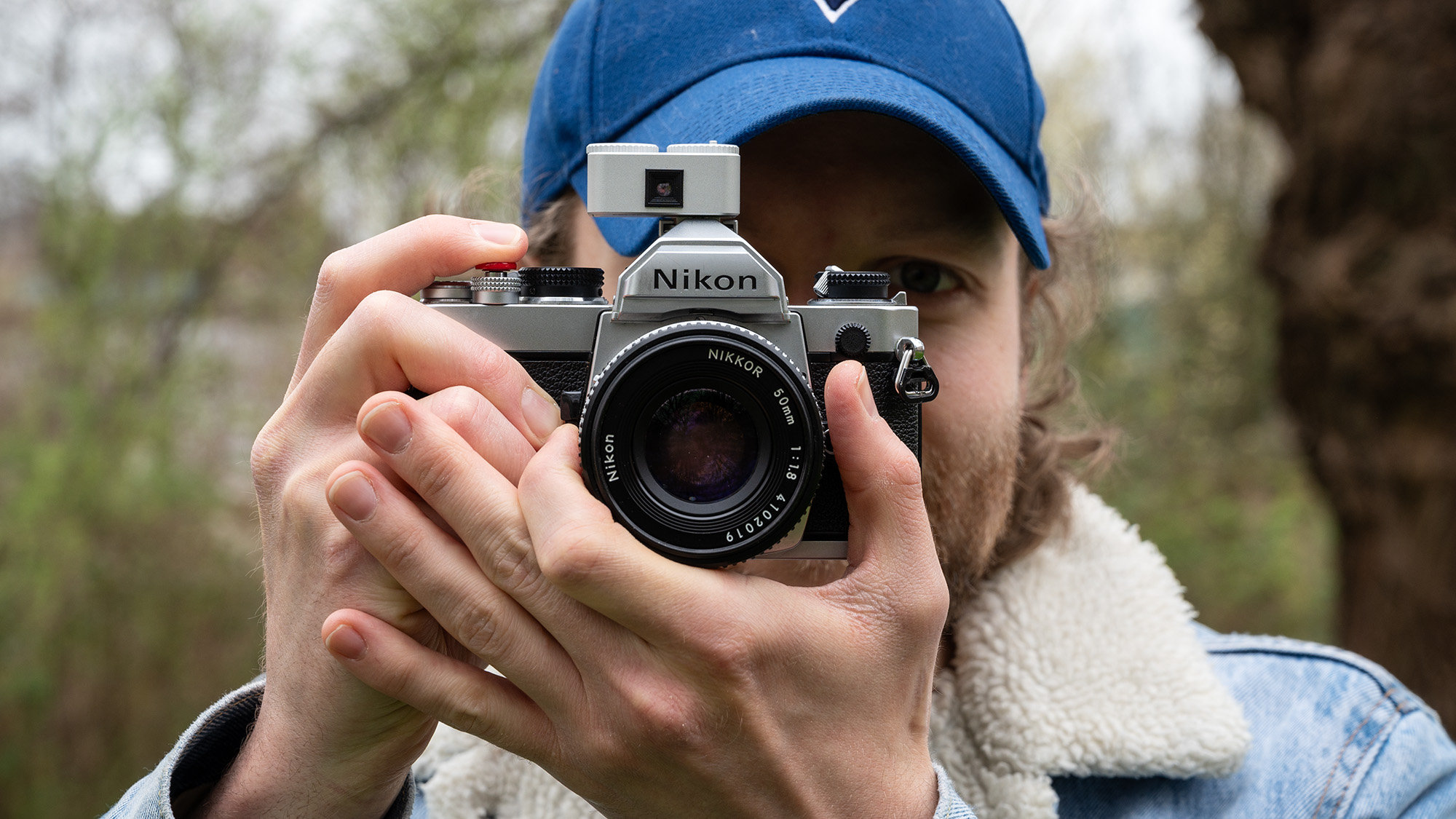
TTArtisan Light Meter II: Specifications
Reflected metering | Yes |
Incident metering | No |
Flash | No |
Angle of view | 45 degrees |
Shutter speed range | 1 sec-1/2000 sec |
Aperture range | f/1-22 |
ISO range | ISO25-6400 |
LCD display | No |
Battery | CR1632 |
Dimensions | 1.57x1.37x0.62in / 40x35x16mm |
Weight | 1.2oz / 34g |
TTArtisan Light Meter II: Price
The TTArtisan Light Meter II’s biggest draw is its price. It costs just $62 / £69 / AU$110. Compare that to the Sekonic L-208 Twinmate at $139 / £135 and the Voigtlander VC Speed Meter II at $225 / £247 and TTArtisan’s offering is much cheaper. Sure, the Sekonic L-208 Twinmate boasts more features and functionality and both Sekonic and Voigtlander boast better light meter heritage (Sekonic reigns supreme), but if all you’re looking for is a straightforward reflected metering unit that won’t break the bank, The TTArtisan Light Meter II fills that area of the market.
TTArtisan Light Meter II: Design & Handling
The light meter comes in a rather stylish little box, slotted snugly into a foam cutout alongside a minuscule crosshead screwdriver. Mine didn’t come with an instruction booklet, so I learned the hard way that you only need to remove one screw (nearest the cold shoe) to access the battery compartment. You’ll notice four empty screw holes that can be used to reposition the hot shoe, useful if the default configuration doesn’t fit on your camera’s hot shoe well enough.
A single CR1632 battery powers the TTArtisan Light Meter II. Here in the UK, the CR2032 that powers the original TTArtisan Light Meter is more common, so you might want to order a battery alongside the light meter, because I had trouble finding one in my local grocery stores.
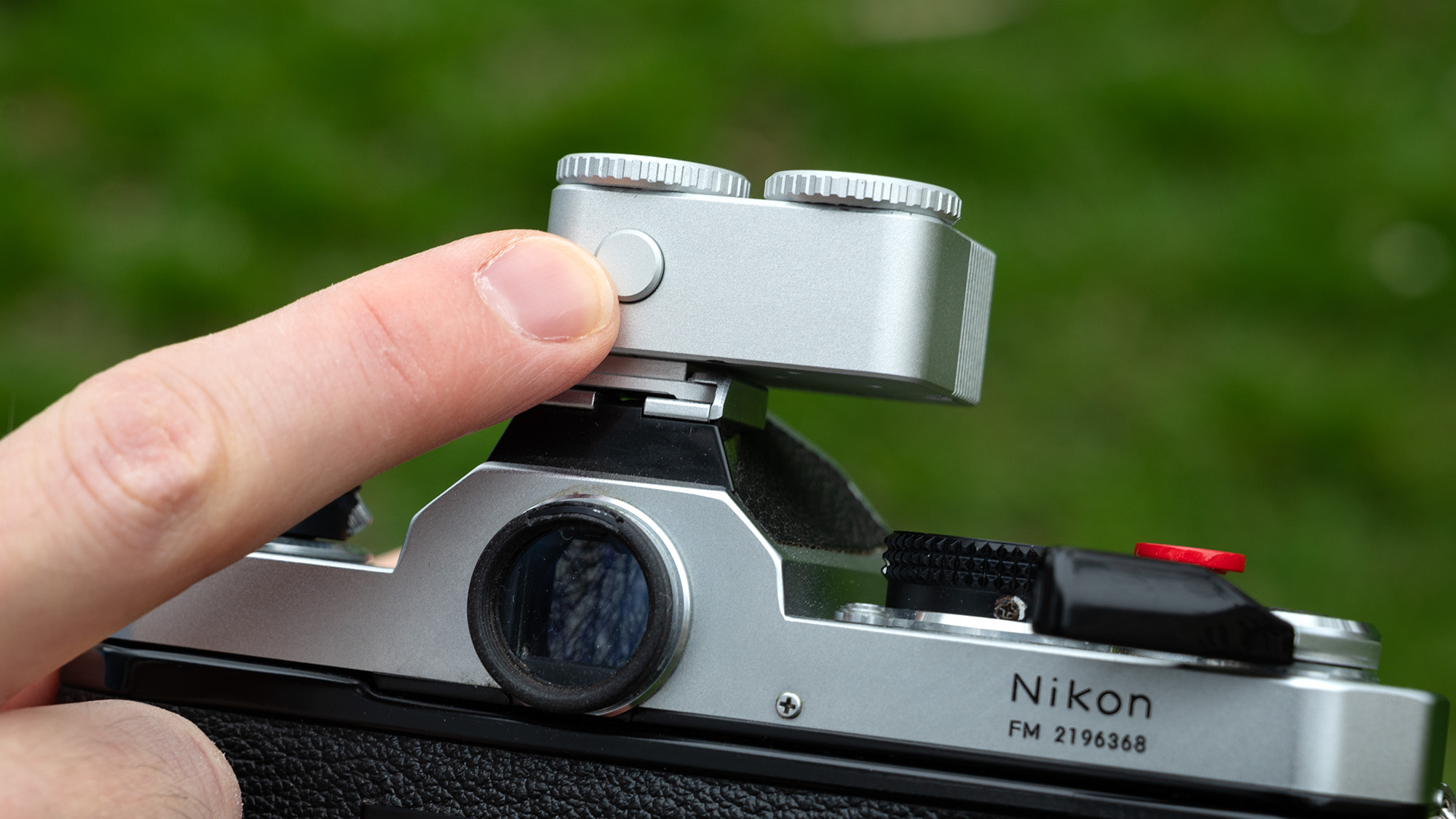
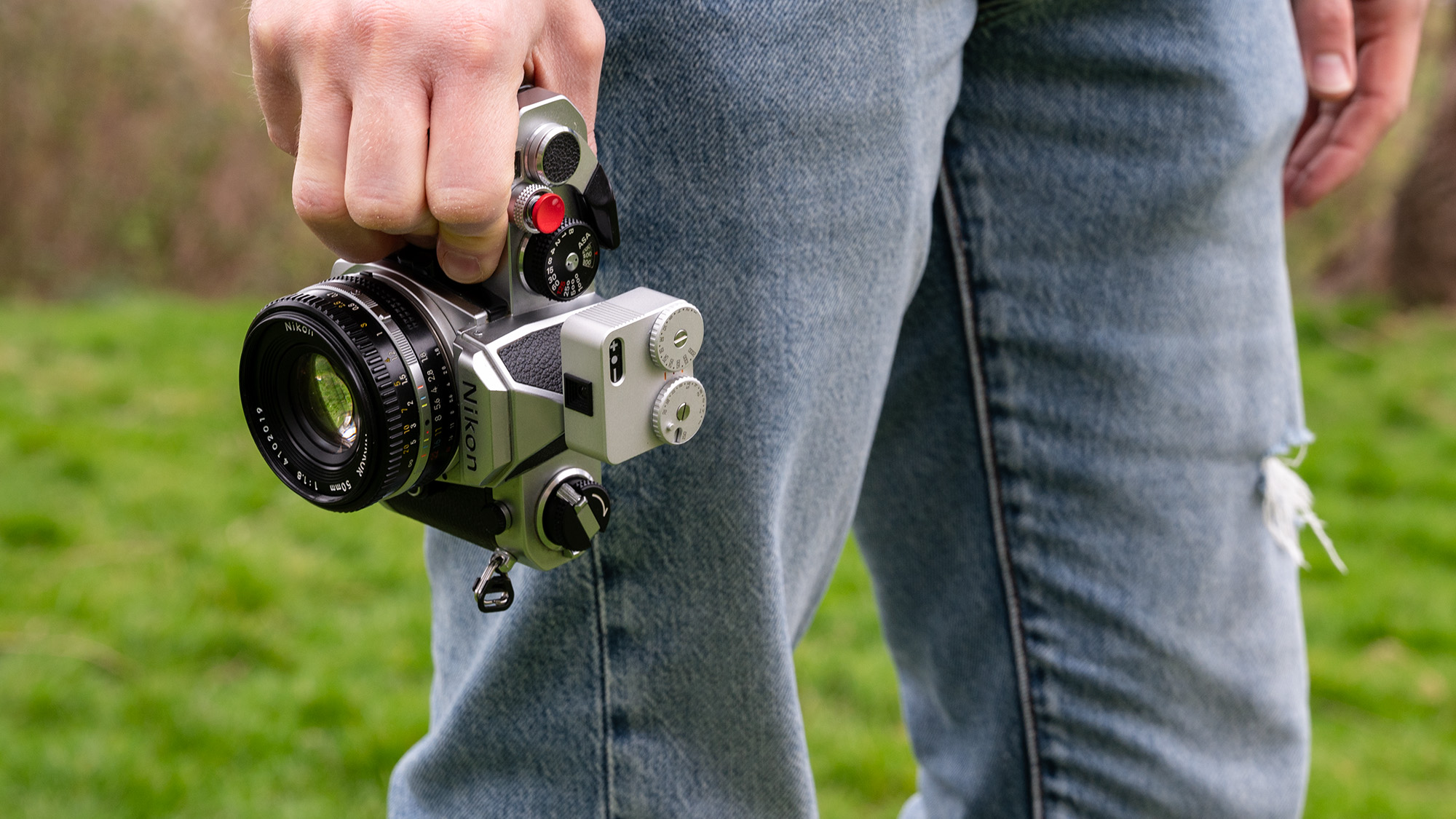
Pick up the light meter for the first time and the build quality feels substantial. It’s slightly smaller than the original TTArtisan Light Meter and weighs just 34g. It certainly isn’t heavy, but it's weighty enough to inspire confidence. It’s made from aircraft aluminum, which immediately feels more premium than the Sekonic L-208 Twinmate’s plasticky casing. The dials feel suitably robust and make a satisfying click when swivelled. However, the battery compartment door of my unit rattles considerably, since it’s only held into place by one screw.
I did manage to remedy this by moving the cold shoe to the opposite end of the light meter. Doing this causes the cold shoe to clamp down on the battery door and stops the rattling, but it’s certainly not ideal, especially if this configuration doesn’t work for you. The screws don't inspire much confidence, either. I wouldn’t want to be constantly screwing and unscrewing them for fear of threading a screw hole or breakage.
The cold shoe fitted snugly into the hote shoe mounts of my Nikon Z8 and Nikon FM. I didn’t have to force it into the hot shoe, but I never felt it was going to slip out. A new addition is a set of grooves cut into either side of the aluminum casing and this does provide a little extra purchase for your thumb and forefinger when pulling the accessory out of the hot shoe.
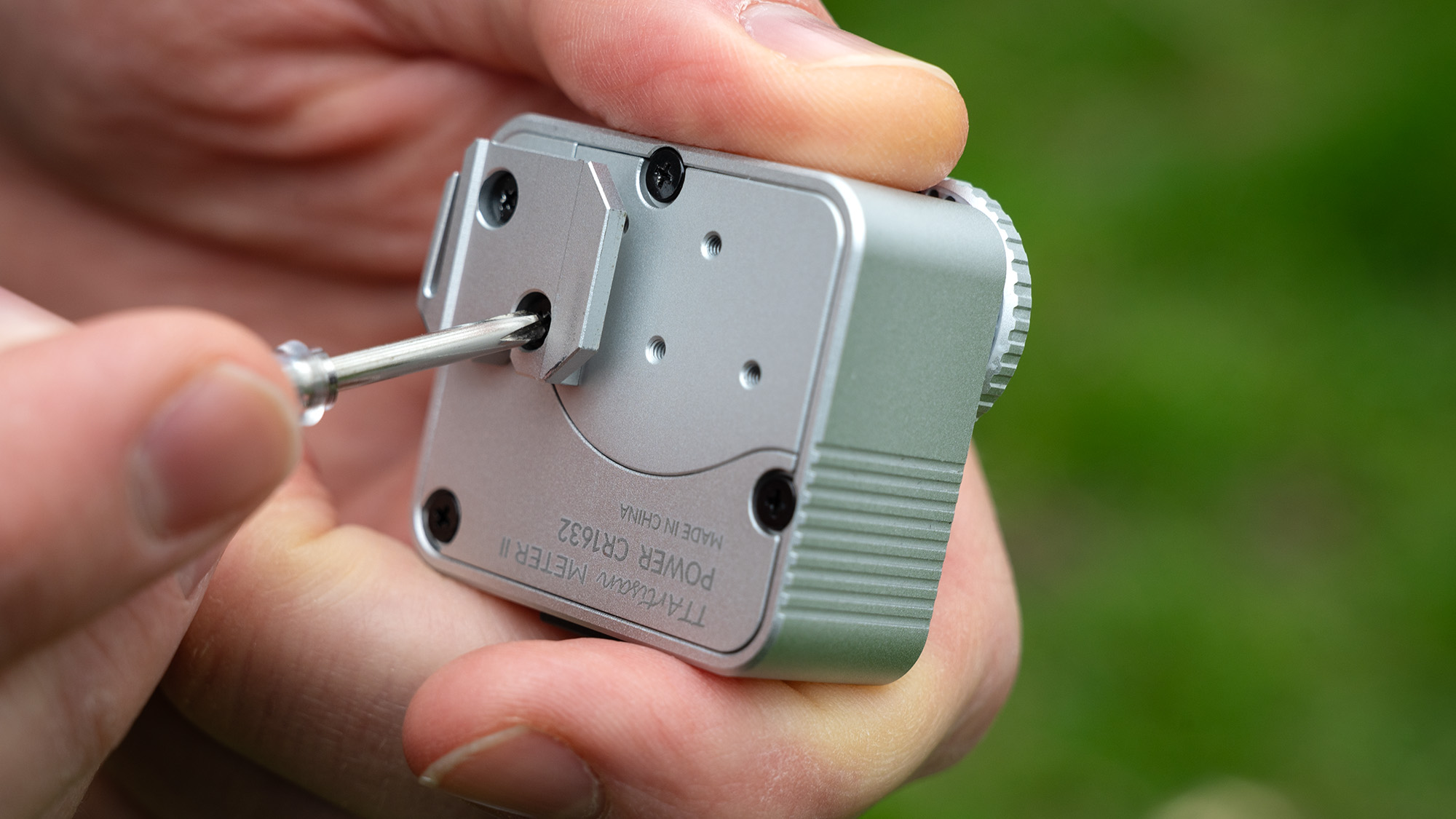
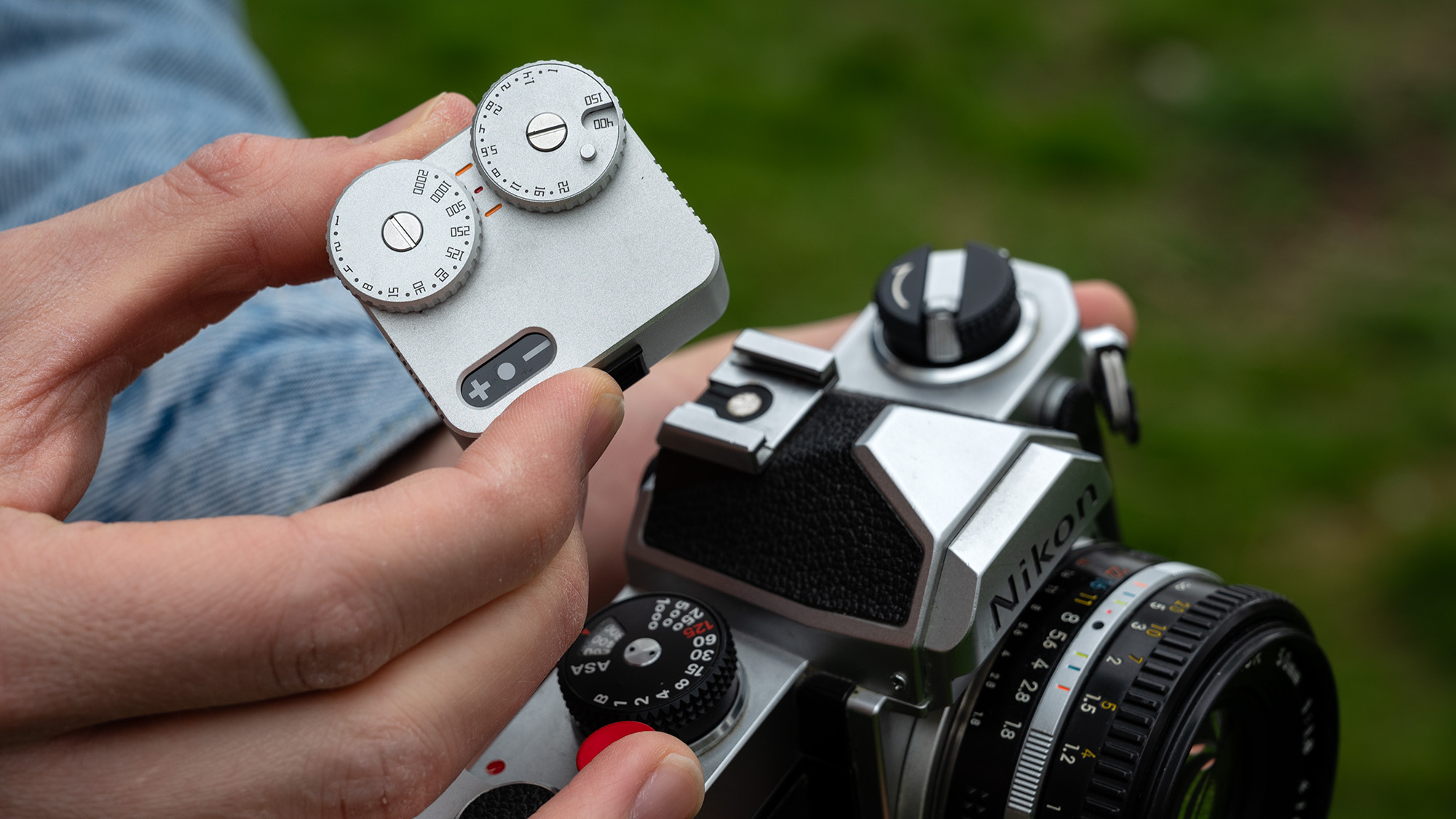
The control layout and interface is satisfyingly simple and will be instantly recognizable to anyone familiar with the Voigtlander VC Speed Meter II. You have a button to activate the light meter. Three LED lights to indicate the current exposure: minus, dot and plus. An aperture dial on the left-hand side, with an ISO dial in the center, and a shutter speed dial on the right-hand side. It’s all very simple and provided you only need a reflected meter reading, I think it’s much more simple to use than Sekonic’s closest competitor the L-208 Twinmate.
The only fiddly bit is setting the ISO. Not only is it a bit difficult to twist the dial – you only have a tiny nib for purchase – it’s very easy to turn the ISO dial and inadvertently end up turning the aperture dial along with it. Changing the aperture isn’t the end of the world, since you’ll be setting the ISO dial first. But when the aperture dial is swiveling, the ISO dial isn’t. You can hold the aperture dial in place with one hand and twist the ISO dial with the other, but this isn’t practical if you're out in the field and one hand is holding your precious camera. Suffice it to say, it can get mighty frustrating. Especially if you don’t want to miss the moment unfolding in front of you.
The numericals on the dials are in one-stop increments, so the aperture reads: 1, 1.4, 2, 2.8, 4, etc, the ISO reads: 25, 50, 100, 200, etc, and the shutter speed reads: 1, 2, 4, 8, 15, 30, etc. But in the case of the aperture and shutter speed, you have a dot between each numerical, so it’s actually in 1/2-stop increments. The shutter speed on the original TTArtisan Light Meter was only in one-stop increments. It’s also worth pointing out that the shutter speed dial maxes out at 1/2000 sec. Fine if you have a film camera like my Nikon FM, which maxes out at 1/1000 sec, but not ideal if you’re using a Nikon FE2 with a 1/4000 sec shutter speed, for example.
Something I have noticed is that the markers on the aperture and shutter speed dials don’t always line up properly with the position marker on the body. On my unit, this is only a small problem with the shutter speed dial, but the aperture dial fares noticeably worse. This is, in part, due to the ISO dial. You see, the ISO dial doesn’t click – it’s totally fluid – and when you move it, it changes the positioning of the aperture dial. But, even if you move the ISO window over the desired ISO perfectly, the aperture dial markers still don’t line up with the position marker. This can make it a little tricky to work out exactly what aperture you’re actually setting.
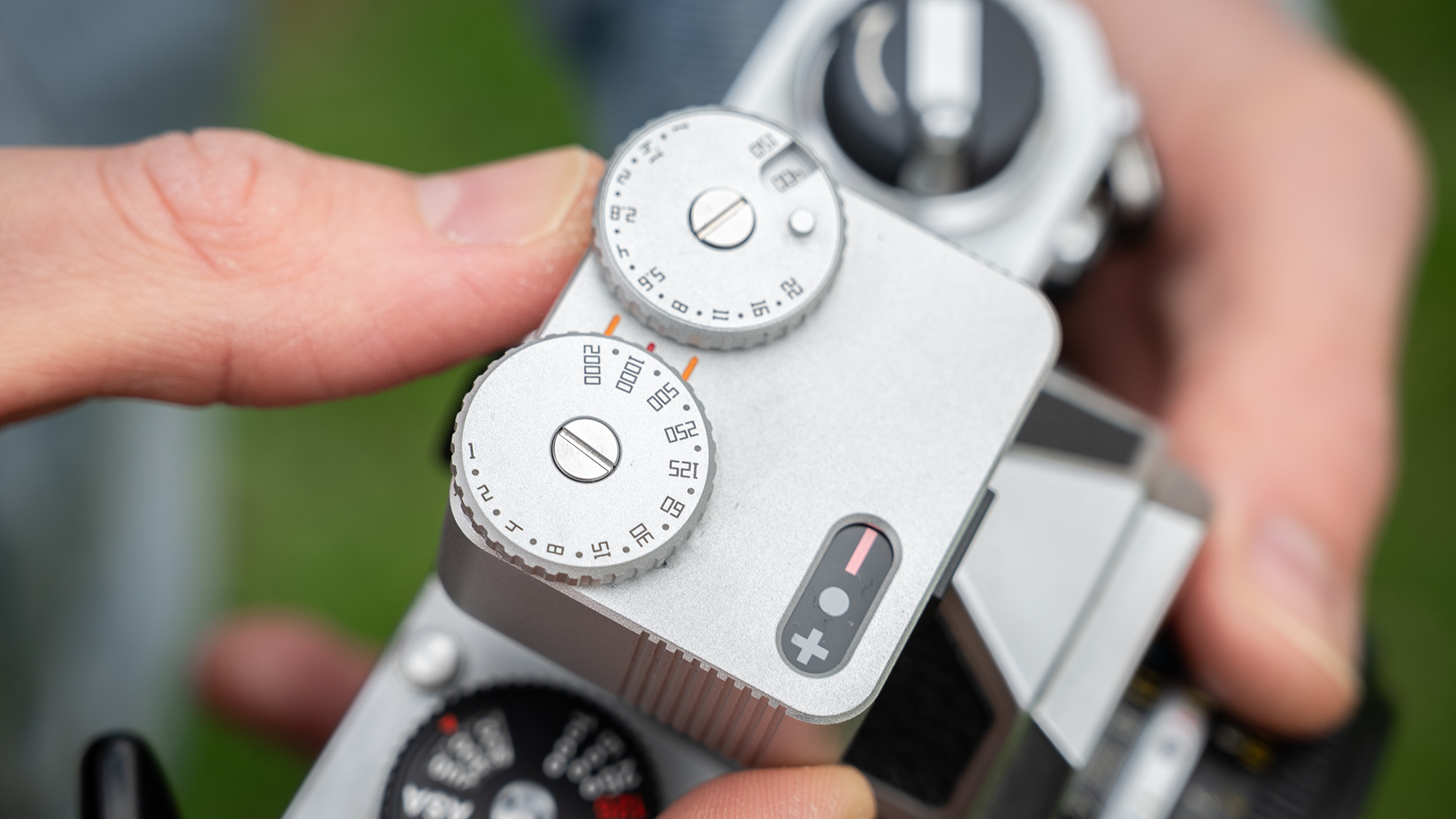
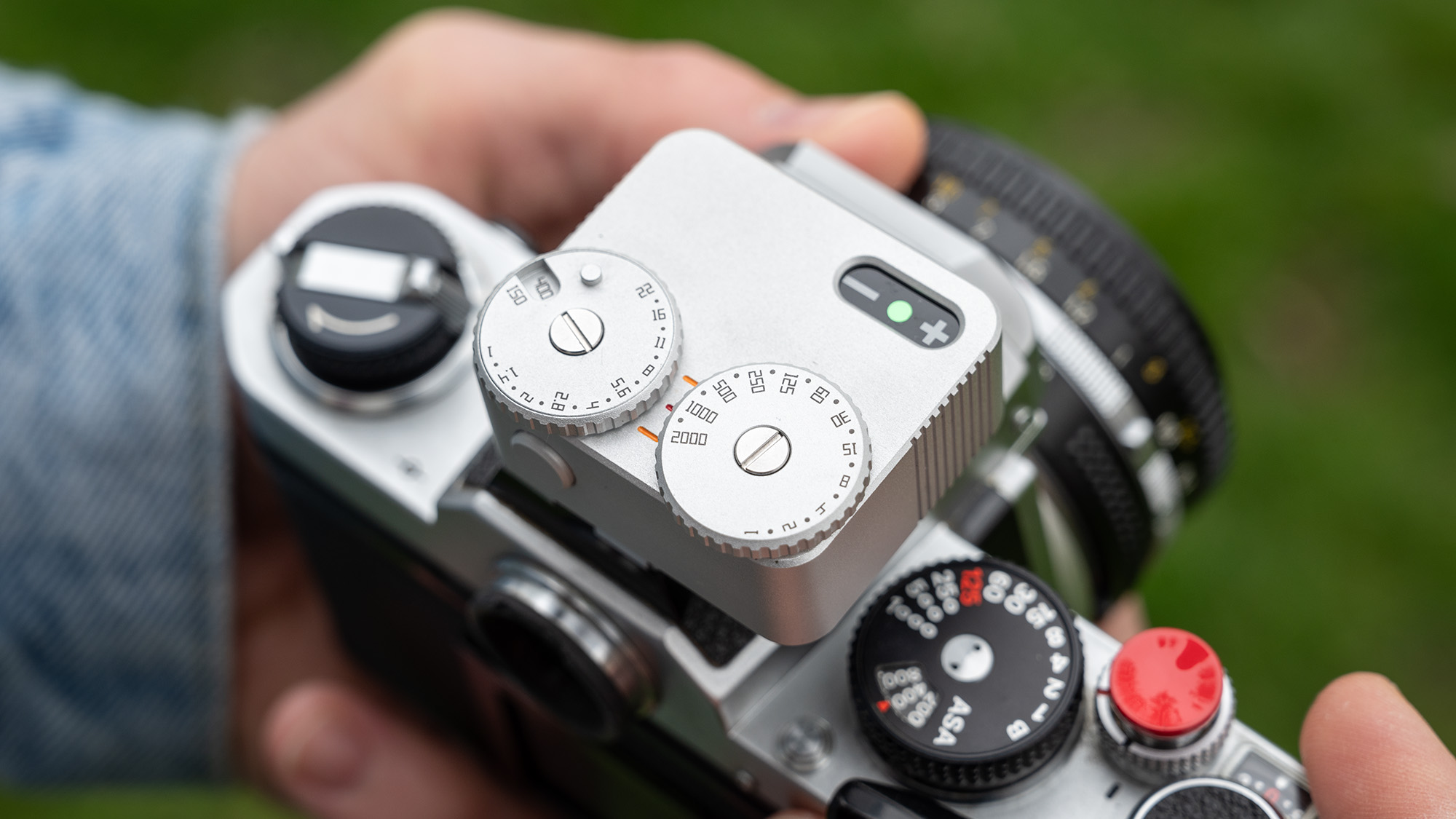
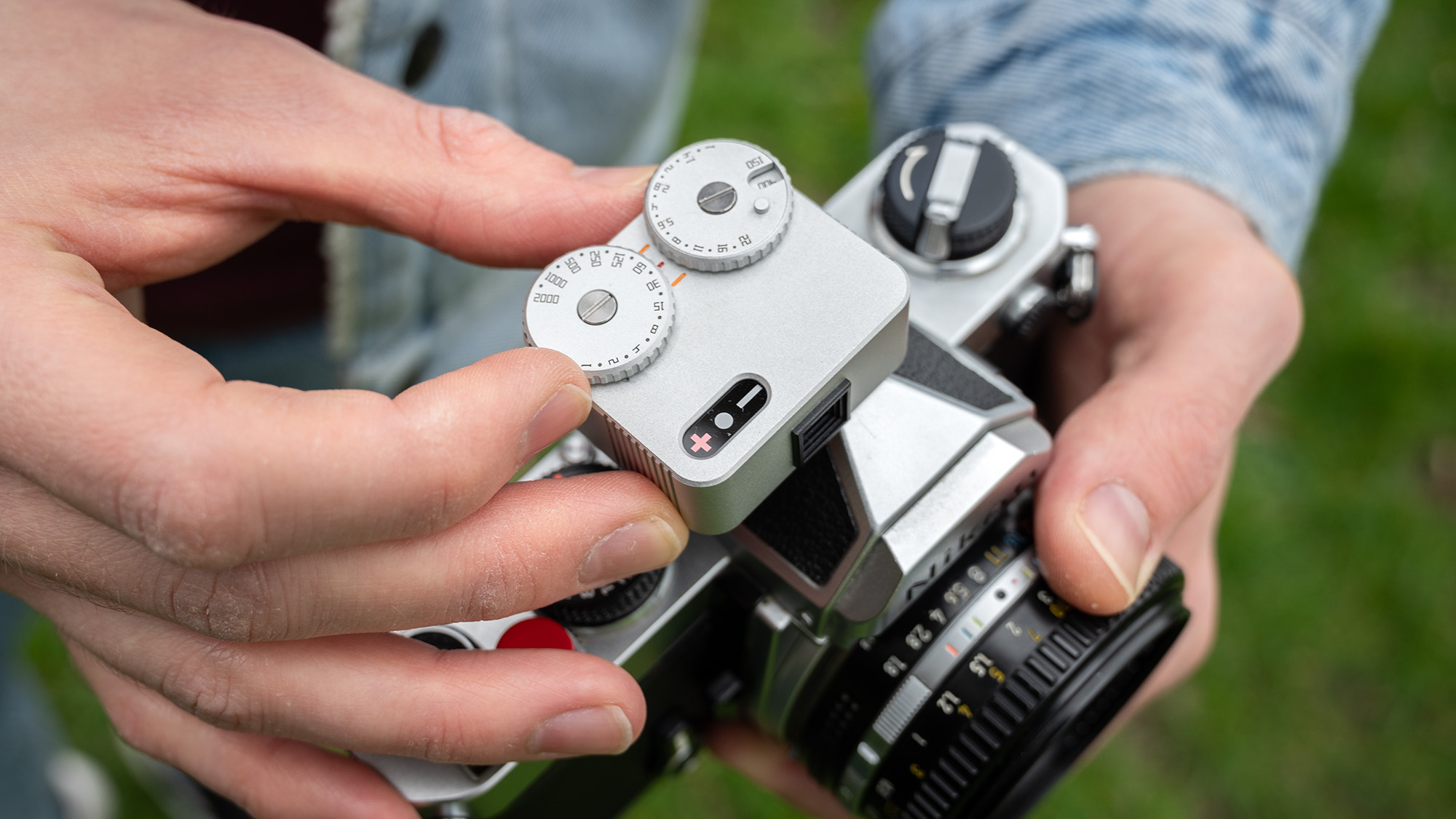
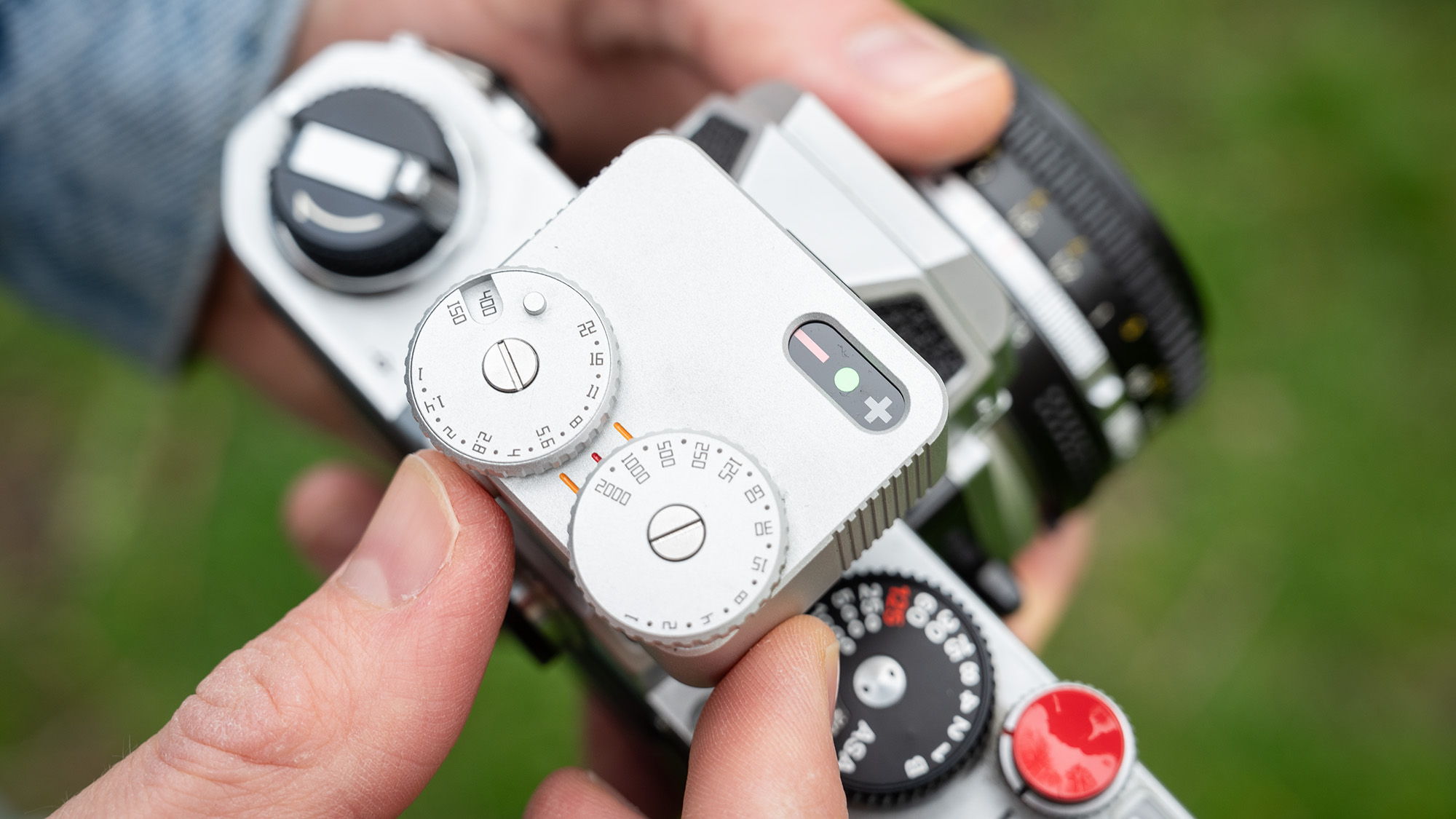
TTArtisan Light Meter II: Performance
It’s important to be aware that the TTArtisan Light Meter II only measures reflected light. This means the light bouncing off of the object or area where you’re pointing the light meter’s metering module. The meter will calculate an average reading from the light it measures across its 45-degree viewing angle and its point of reference as to what constitutes a correct exposure is middle grey.
The problem is, a light meter cannot tell the difference between a white wall that dominates the frame and bright conditions, just as it cannot tell the difference between a black wall and dark conditions. It’ll simply deliver an exposure that turns either wall, middle grey.
As such, reflected metering isn’t as accurate as incident metering, which measures the light falling onto the subject, but it’s more practical for everyday use, since the measurement is taken from the shooting position, hence why it’s often easier to mount the meter on the camera’s hot shoe.
The TTArtisan Light Meter II uses minus, dot, and plus-shaped LED lights to indicate the current exposure. It’s a simple system that works very effectively. An illuminated green dot only means the exposure is correct. An illuminated red minus only indicates underexposure. An illuminated red plus only indicates overexposure. And an illuminated red minus or plus, with a green dot, means the exposure is under or overexposed by one stop, respectively. If both the red minus and plus are illuminated, it means a meter reading is not possible.
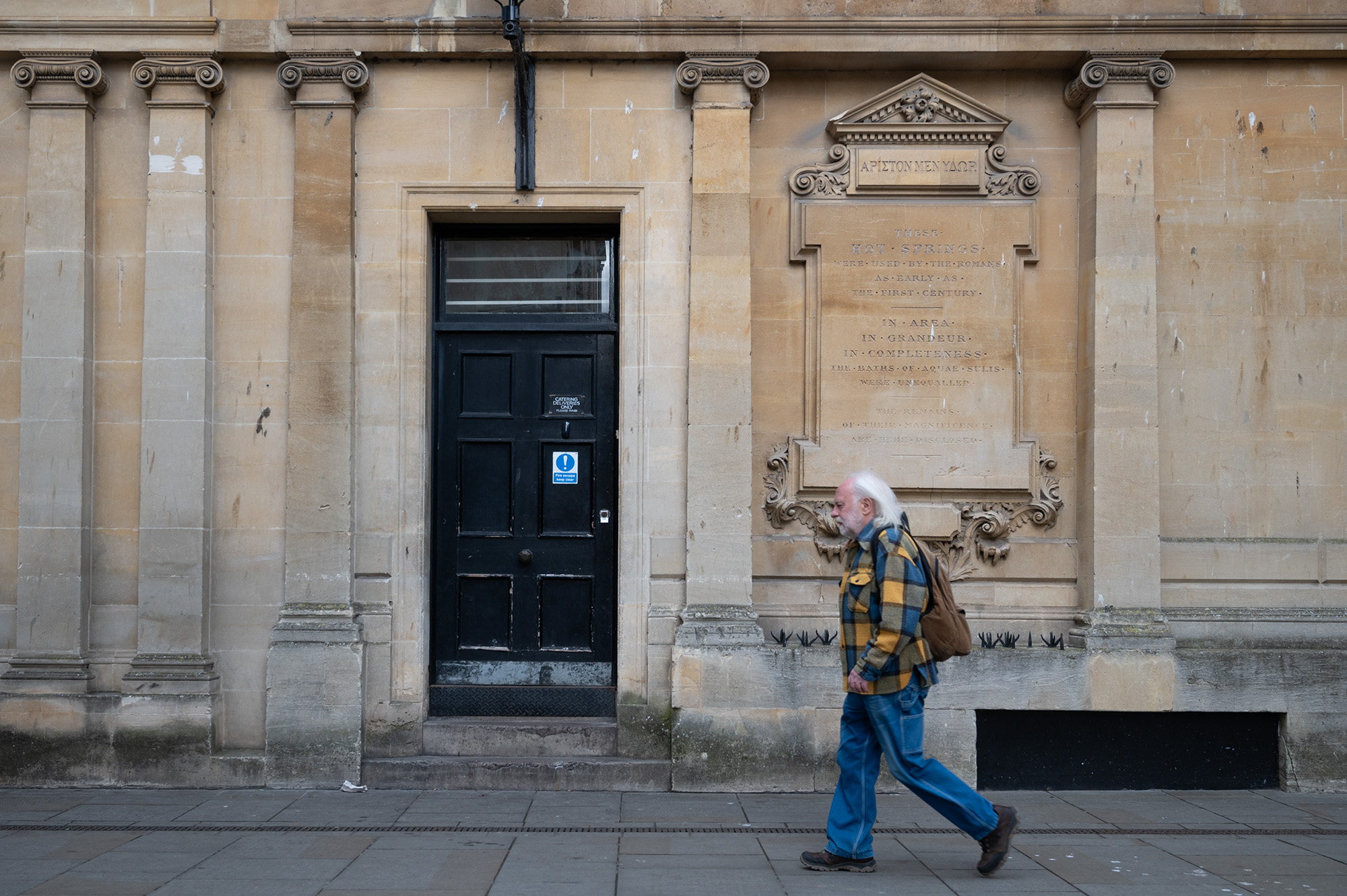
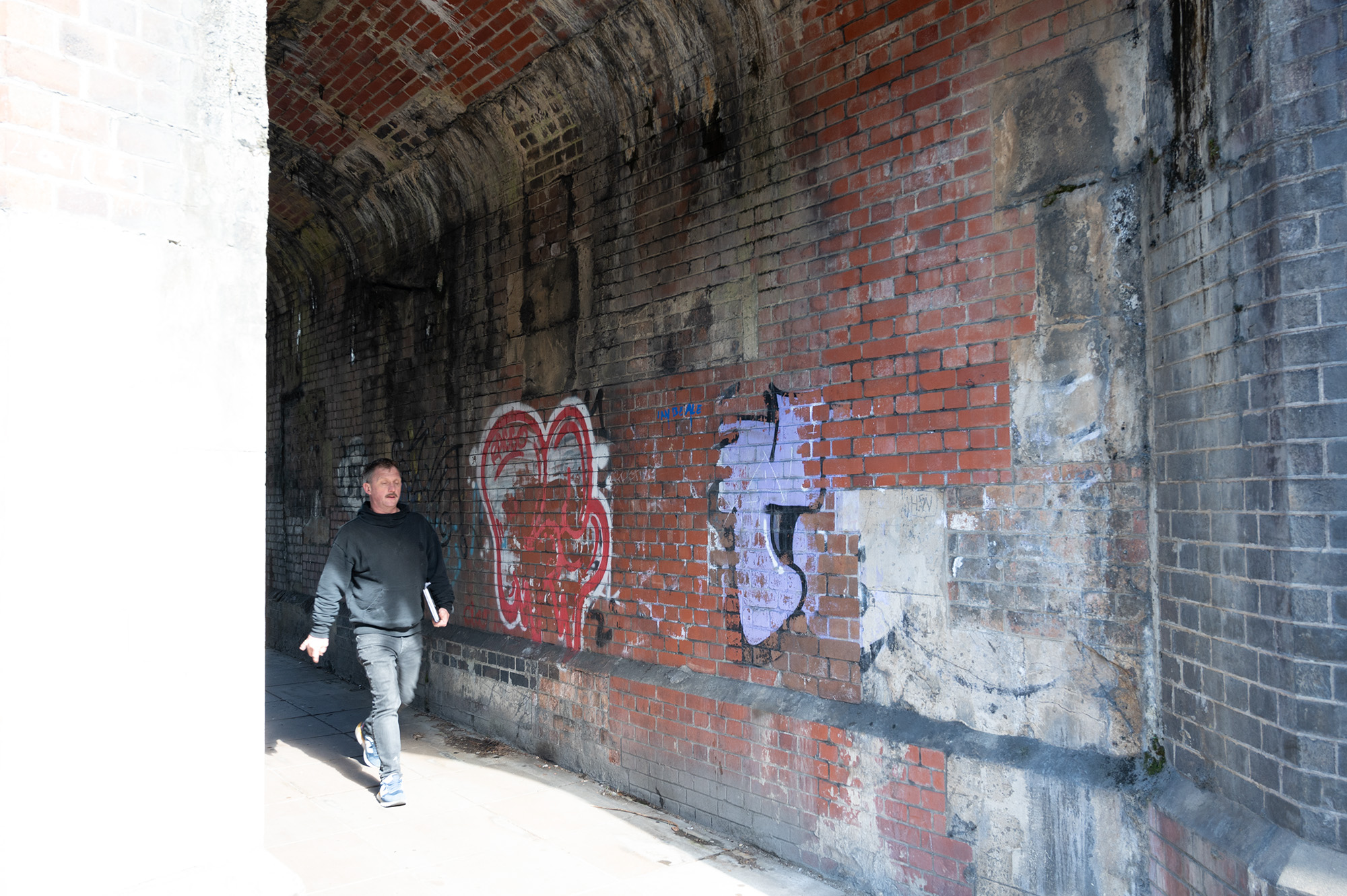
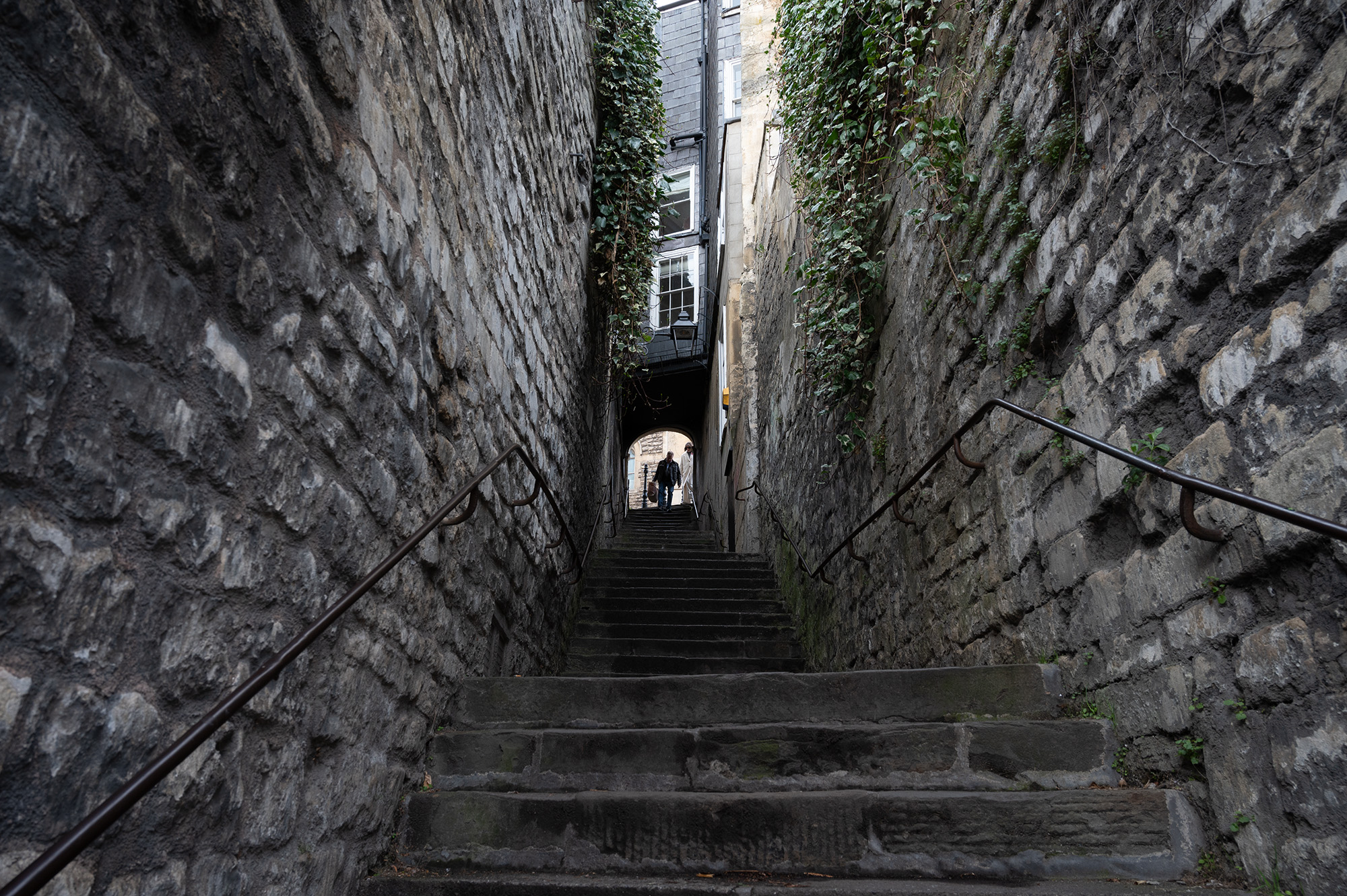
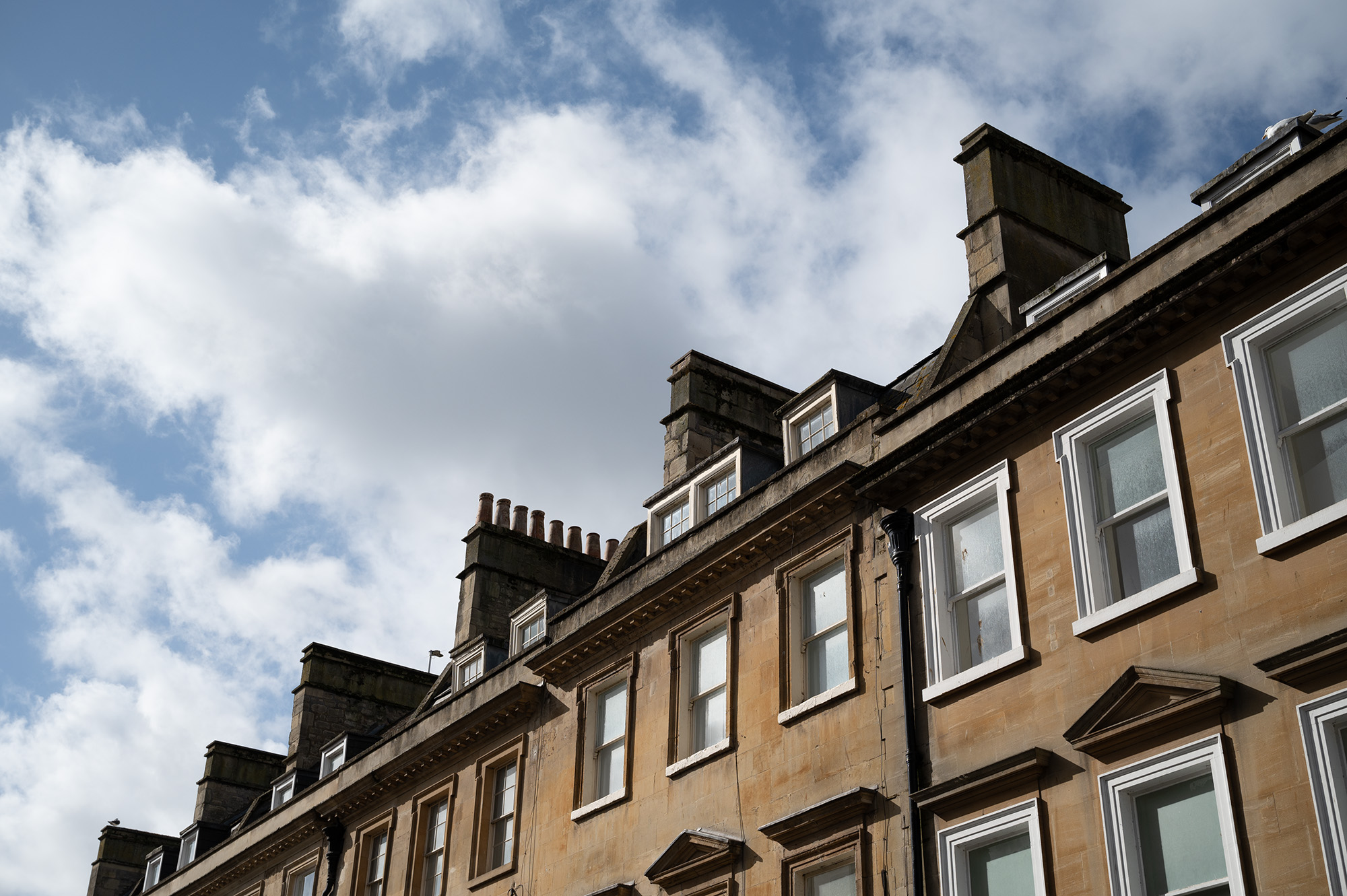
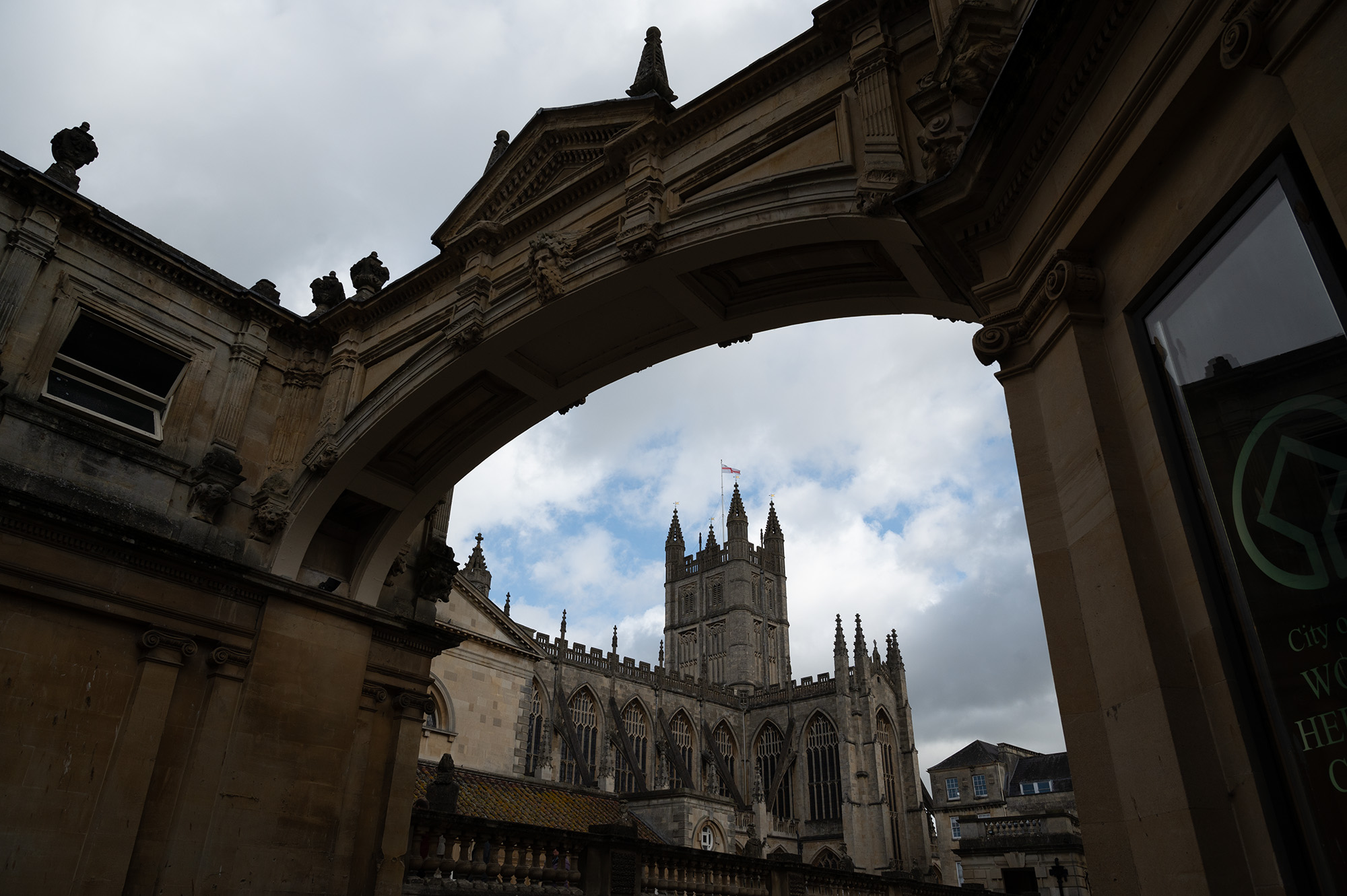
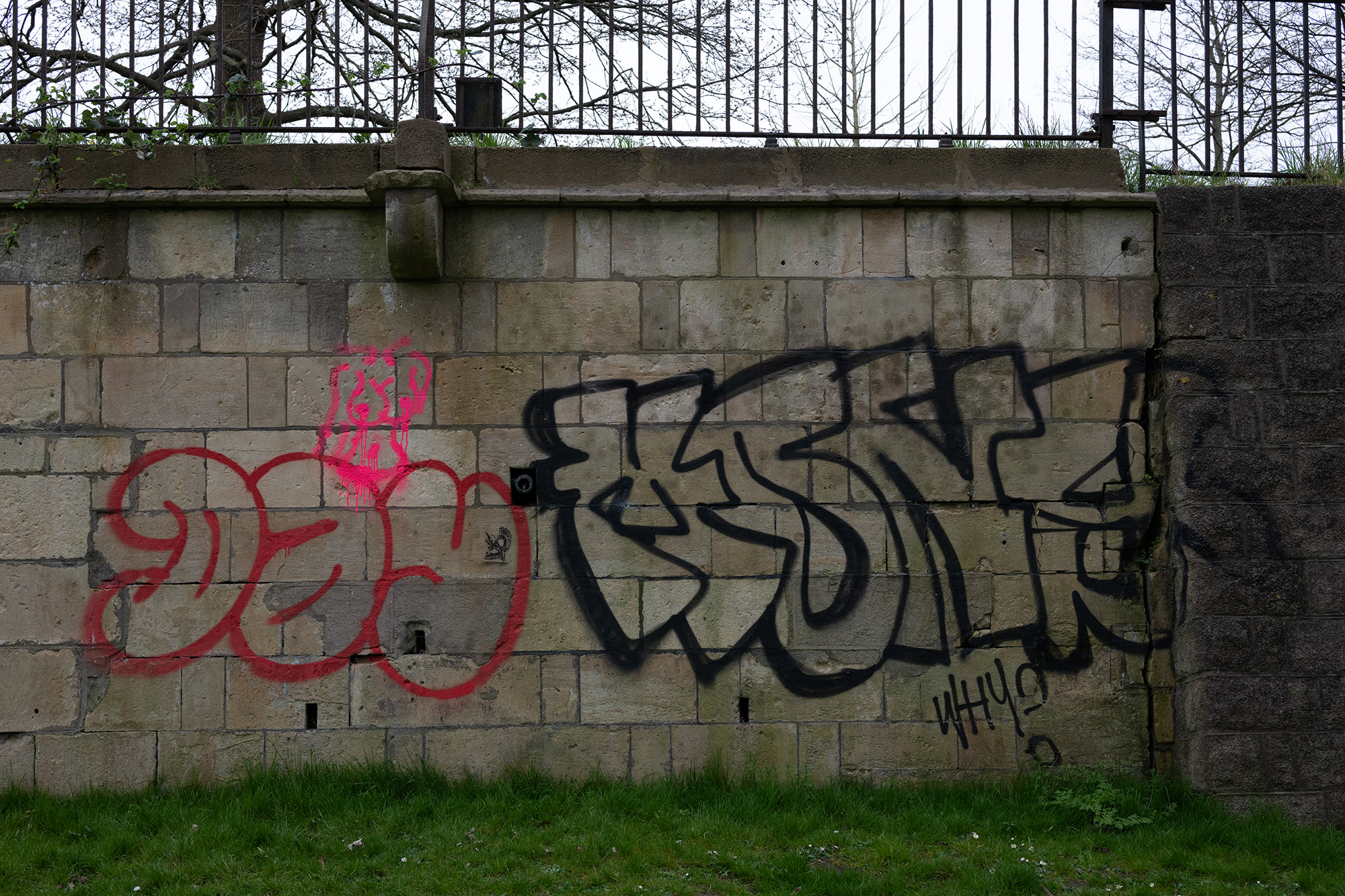
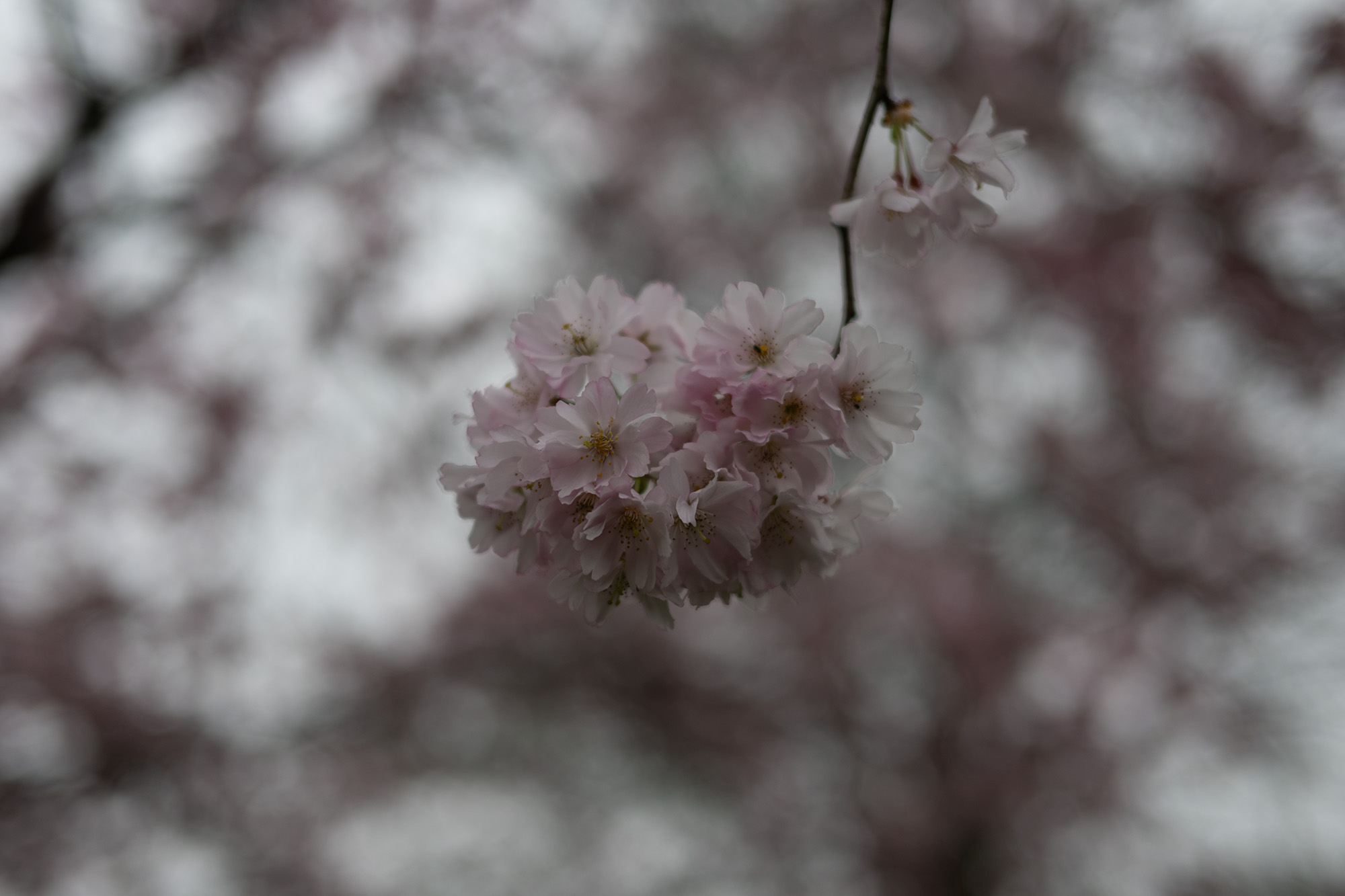
Inside, the LED lights appear bright enough, but outside on a relatively bright day it can get difficult to see them. Still, the light meter works well enough. To my eye, the light meter has a tendency to underexpose images slightly, so I took to setting my exposure with the green dot and red plus illuminated to overexpose images by a stop. Again, this is a reflected light meter, meaning different results are very easy to come by. Personally, I’ve always found that reflected light meters do perform slightly differently. Provided I can find a way to work with them and get consistent results, I’m happy. However, with any light meter, I’d always recommend using it with a digital camera first, so you can get used to it without having to needlessly waste film.
I shot mostly at f/8, which will be a staple for a lot of film photographers. And with the shutter speed maxing out at only 1/2000 sec, I did find that wider apertures meant I exceeded this value on bright days. Then again, this wouldn’t be a problem for my Nikon FM, with its shutter speed capped at 1/1000 sec. I did find that the fiddly ISO dial became a bit of a nuisance out in the field, particularly if I was attempting to work quickly. And on more than one occasion, I was struggling to achieve a sensible reading, only to find that I’d inadvertently moved the aperture dial when changing the ISO. But this was when testing the light meter with a digital camera. During film use, it's much less of a problem since you're only changing the ISO when using a different sensitivity of film.
TTArtisan Light Meter II: Verdict
The TTArtisan Light Meter II doesn’t suffer from the same measurement inaccuracies that reportedly dogged its predecessor, and while it’s by no means a perfect light meter, I can still recommend it. Light meters aren’t cheap and if you’ve picked up your first film camera, and don’t trust its built-in light meter or it doesn’t have one, you could do far worse than spend $62 / £69 on this little device.
Sure, the build quality isn’t the best, and it can be a little fiddly to control, but the readings are accurate enough and the tried-and-tested design is beautifully simple to use. Film aficionados will likely opt for a Sekonic meter or the Voigtlander VC Speed Meter II, but for those on a budget, the TTArtisan Light Meter II will serve you well enough as you embark on your film-camera journey.
Features | It’s as simple as a light meter gets. And so long as that’s what you’re looking for, it’s no bad thing. | ★★★★☆ |
Design | I’ve marked this down due to the less than perfect build quality and that fiddly ISO dial. But overall, it’s a classic design that’s simple to use. | ★★★☆☆ |
Performance | Maybe a tiny bit underexposed to my eye, but still entirely serviceable | ★★★★☆ |
Value | You get what you pay for and although the TTArtisan Light Meter II isn’t perfect, it’s still extremely good value. | ★★★★★ |
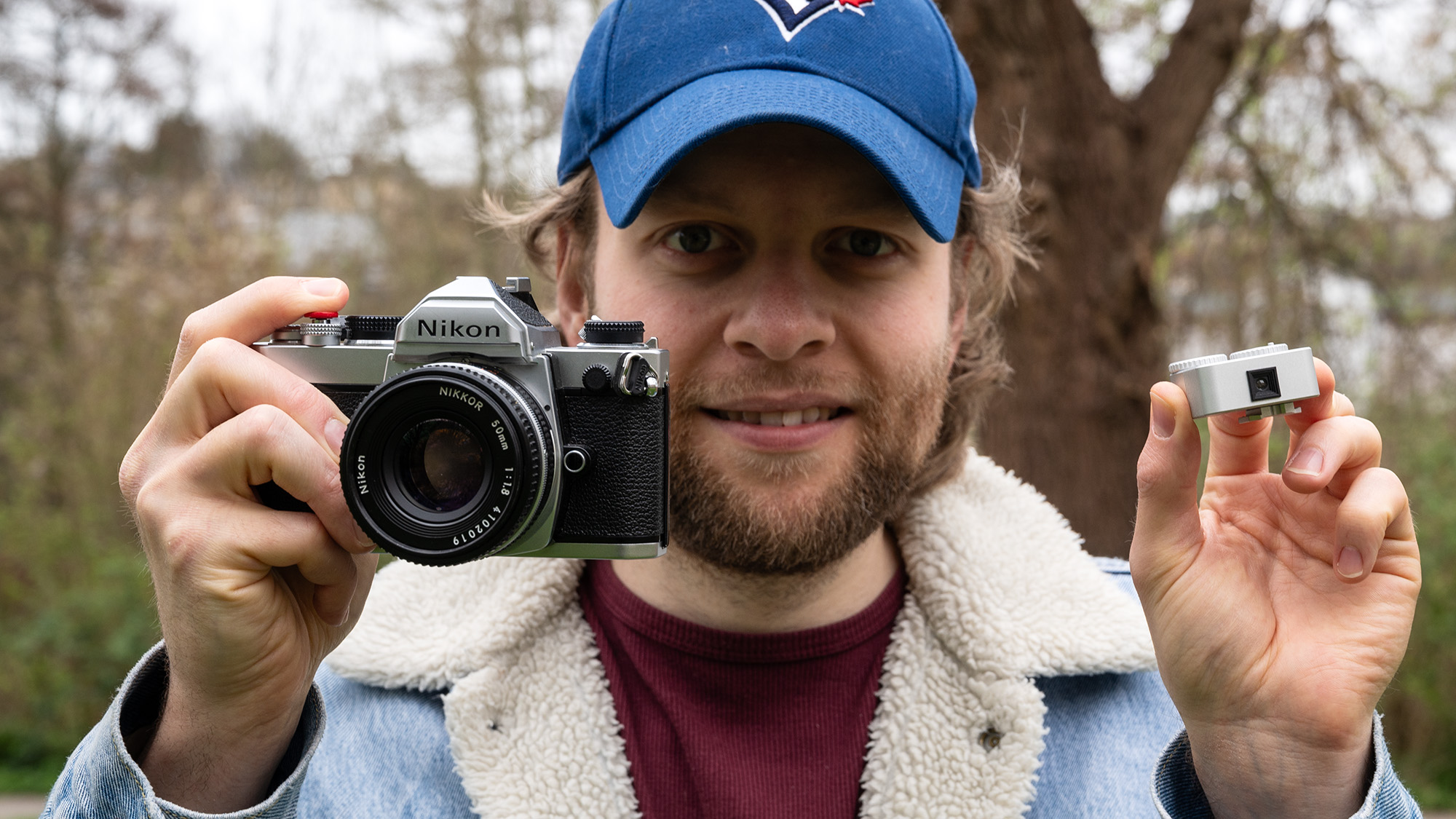
✅ Buy this if...
- You want a cheap light meter that measures reflected light and is simple to use.
- You want a retro-cool light meter to go with your vintage film camera.
🚫 Don't buy this if...
- You require incident and/or flash metering.
- You need a rock-solid, reliable meter that’ll take a beating and stand the test of time.
Alternatives
Sekonic L-208 Twinmate
A great choice if you’re looking for a simple light meter that won’t break the bank, but also want the additional functionality of having an incident meter. It’s bulkier than the TTArtisan Light Meter II, but it’s also lighter, thanks to its plastic build.
Sekonic Flashmate L-308X
If you buy only one light meter in your lifetime then the Sekonic Flashmate L-308X could well be it. It boasts reflected, incident, and flash metering, and is suitable for stills photography and video. It’s not cheap, but it is a light-meter multi-tool after all.

Mike is Digital Camera World's How To Editor. He has over a decade of experience, writing for some of the biggest specialist publications including Digital Camera, Digital Photographer and PhotoPlus: The Canon Magazine. Prior to DCW, Mike was Deputy Editor of N-Photo: The Nikon Magazine and Production Editor at Wex Photo Video, where he sharpened his skills in both the stills and videography spheres. While he's an avid motorsport photographer, his skills extend to every genre of photography – making him one of Digital Camera World's top tutors for techniques on cameras, lenses, tripods, filters and other imaging equipment – as well as sharing his expertise on shooting everything from portraits and landscapes to abstracts and architecture to wildlife and, yes, fast things going around race tracks...
You must confirm your public display name before commenting
Please logout and then login again, you will then be prompted to enter your display name.
